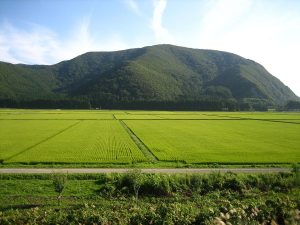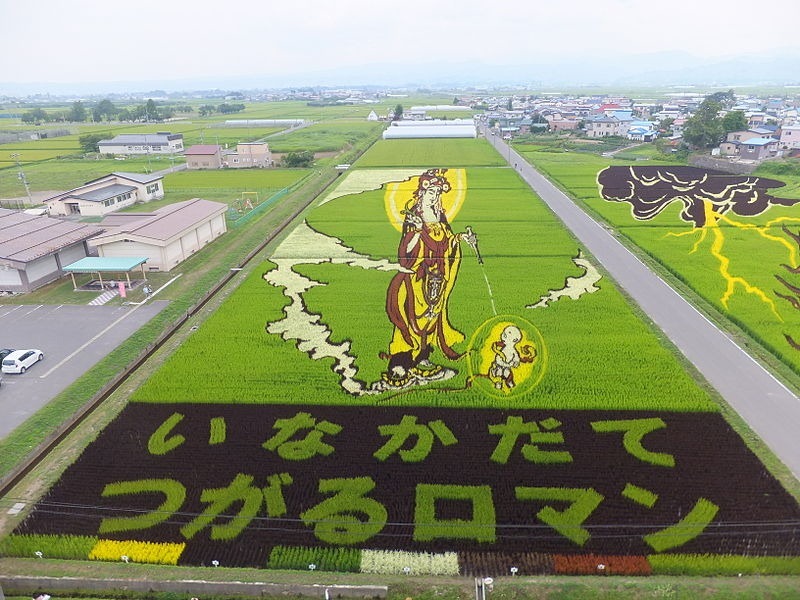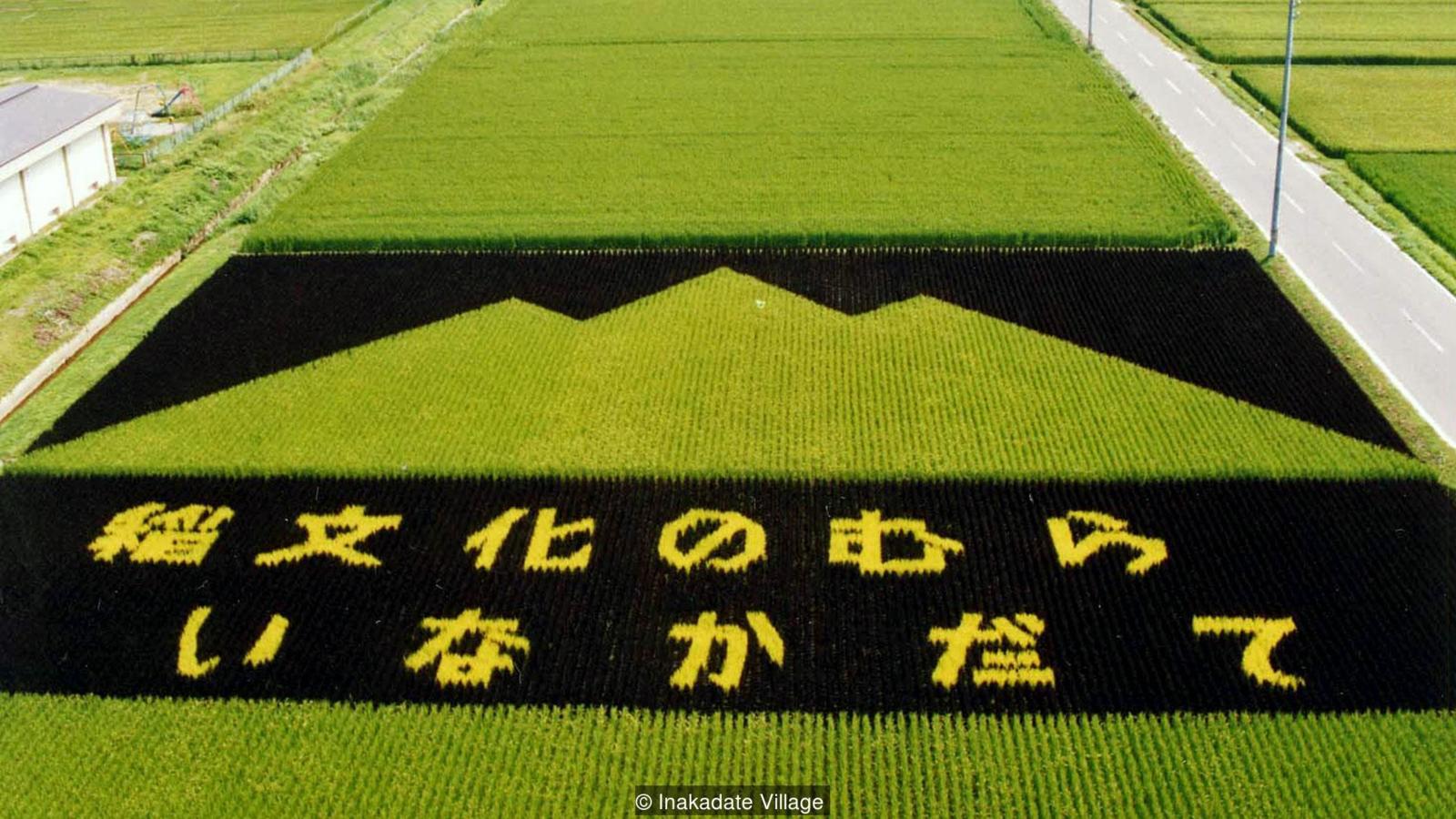Rice is Life
Rice is a defining feature of lots of Asian cuisine, but this food staple is particularly significant when considering Japan’s geographical context. Most commonly, Japan is known for it’s extremely mountainous landscape which creates a difficult barrier for cultivating agriculture. Historically, Japan took advantage of this geographic condition and farmed on rice terraces to sprout rice plants. Japan had to import rice immediately after World War II, due to food scarcity, which is when the government pushed to promote rice cultivation. Following this, rice output reached record highs of 14.45 million tons in 1968 [1]. Rice holds a high cultural importance to the people in Japan and symbolizes wa [2] harmony as the rigorous process of farming on rice terraces involved a collective effort from families, children, and neighbours.
However, as Japanese technology rapidly advances, so has their system of rice farming. “The mechanization of rice production has put rice terraces at a pronounced disadvantage over flat rice paddies, and rice terraces are evidently first in line to be abandoned” [1]. Rice terraces are decreasing more and more as the labor intensive process has pushed farmers to transition to flat rice paddies in which large machinery can be used to accelerate the process. Not only has this agricultural business evolved in technique, a certain village has completely redefined rice beyond a food staple, and into an intricate art form.


Inakadate Rice Paddy Art
The village of Inakadate in the Aomori prefecture, approximately 600km north of Tokyo, has created a spectacular and extraordinary art form through strategically planting various colored rice plants to create beautiful murals that can only be appreciated from an elevated view. Rice Paddy Art was initiated in 1993 as part of a revitalization effort after archaeology revealed that rice has been growing in this area for over 2000 years. The villagers decided to capitalize on this discovery and started with a simple design of Mount Iwaki for the first nine years which gained local popularity [5]. Later on, the local’s moved towards more complex and intricate designs which gathered the attention of all of Japan.



How does it work?
Initially, the designs started off simple with a geometric representation of Mt Iwaki but have progressed to more intricate pieces such as the Mona Lisa, Hokusai’s famous wave, and early Edo Period artist replications. The project starts in April and the designs are carefully drawn out by the village office workers who also create the elaborate plan of how to plant the rice according to colours to create the desired image. In the earlier stages of Rice Paddy Art they calculated and plotted the precise areas of where each colour of rice needed to be planted, which then created a printout design that looks like a mass of dots. Through technological advancements, computers have expedited the process and aid with precise calculations. To add to the level of accuracy for success of the image, the workers must keep into consideration the perspective from the “castle” which was built as a viewing tower for the rice paddies. According to the Japan Times articles, the most sensitive and difficult task is digging red sticks into the bare spring paddies at the exact correct points so those who plant know where to position each variety [5].


These incredible masterpieces resurrected the once dying and shrinking Inakadate village through their creative artwork which draws in over 200, 000 visitors annually. Rice, a simple yet such a meaningful element, has found a way to harmonize a village and contribute to sustaining its people. Nakayama, who leads the project says, “I feel happy to see many people come to see our rice paddies because, here in Inakadate Village, rice and people’s lives are very closely connected” [5]. Another villager guide says, “This is a village with nothing but rice fields. So we thought, let’s do with what we have” [7]. These testaments have proven that rice is more than a mere food staple in Japan, but an important symbol that ties in the historical, cultural, and geographical importance of growing rice as a unified community, with a creative spin courtesy of Inakadate village.
[1] http://www.tokyofoundation.org/en/topics/japanese-traditional-foods/vol.-19-rice-grown-in-rice-terraces
[2] http://spice.fsi.stanford.edu/docs/rice_its_more_than_food_in_japan
[3] https://d20aeo683mqd6t.cloudfront.net/wp-content/uploads/2014/09/pixta_22974431_S_%E6%A3%9A%E7%94%B0%E3%82%A4%E3%83%A1%E3%83%BC%E3%82%B8.jpg
[4] https://en.wikipedia.org/wiki/Rice_production_in_Japan
[5] https://www.japantimes.co.jp/life/2007/08/26/general/homegrown-art-rice-paddy-ukiyo-e/#.WgKlBBNSxbV
[6] http://www.amusingplanet.com/2015/07/the-rice-paddy-art-of-japan.html
[7] http://www.bbc.com/travel/story/20170223-an-ingenious-solution-made-of-rice
The history and cultural significance of rice in Japan are truly fascinating. The transition from traditional terraces to modern flat paddies shows how technology shapes agriculture over time. For those who appreciate innovation in different industries, https://moreapks.com/ offers a great way to explore exciting gaming opportunities. The platform provides a seamless experience with engaging features and rewarding bonuses, making it a solid choice for entertainment.